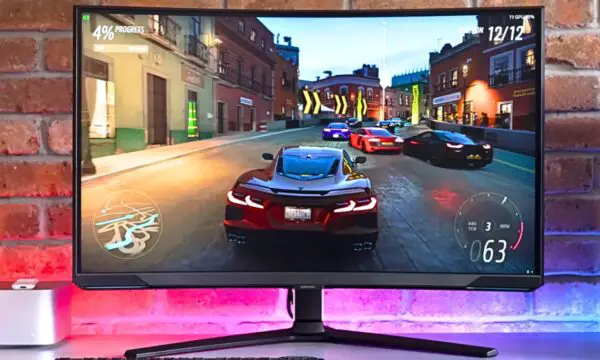Setting up gaming monitor for the first time can be exciting but daunting task, especially for beginners.
To enjoy a smooth gaming experience, it’s important to set up a monitor properly.

Here are the steps to do it:
Firstly, carefully unbox your gaming monitor, ensuring you keep all the provided cables, manuals, and accessories in a safe place.
Place the monitor on a stable and clean surface, ideally at an eye level to avoid neck strain.
If your monitor comes with a stand, attach it according to the instructions provided.
Some monitors might also be VESA mount compatible, allowing you to mount them on a wall or a specialized monitor arm.
Once the monitor is securely positioned, it’s time to connect it to your gaming PC or console.
Typically, gaming monitors come with various input options such as HDMI, DisplayPort, and sometimes USB-C.
HDMI and DisplayPort are the most common; HDMI is widely used and is sufficient for most gaming needs, while DisplayPort is preferred for high refresh rates and resolutions.
Ensure your PC or console’s output port matches the monitor’s input and use the appropriate cable to connect them.
If your monitor has multiple input sources, you might need to select the correct one using the monitor’s on-screen menu.
After establishing the physical connection, power on your monitor and computer or console.
You will see the boot-up screen on the monitor. If not, check the connections again or consult the monitor’s manual for troubleshooting tips.
Next, adjust the display settings. This involves setting the correct resolution and refresh rate.
For gaming, a higher refresh rate is preferable as it leads to smoother motion.
Access the display settings on your computer or console and select the recommended resolution and the highest available refresh rate that your monitor supports.
Now, fine-tune your monitor’s settings for the best gaming experience.
This includes adjusting brightness, contrast, color settings, and any gaming-specific features your monitor might have, like game modes or black stabilizer settings.
These settings can usually be accessed and adjusted using the buttons on the monitor itself or via an on-screen display menu.
Lastly, consider the ergonomics. Adjust the tilt, height, and swivel of your monitor for comfortable viewing.
The top of the monitor should be at or slightly below eye level, and you should be sitting at a comfortable distance, typically an arm’s length away.
Remember, each monitor and setup can be unique, so always refer to the user manual for specific instructions and features.
With these steps, you will be well on your way to enjoying your gaming sessions with your new monitor.
You may also love to read!
Things to avoid with your gaming monitor
Dell introduces the touchscreen in its monitors
